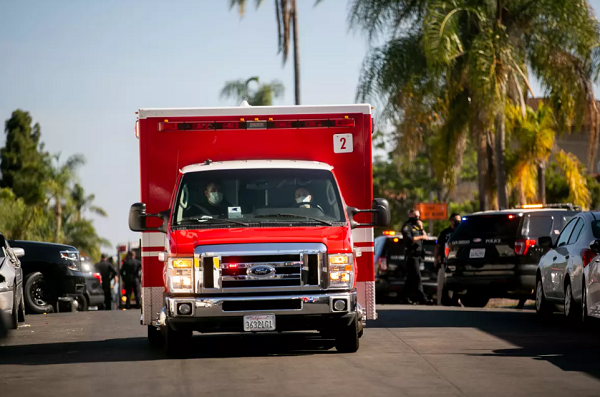Opinion: Why that ambulance racing through L.A. traffic may not be going to a life-or-death emergency
By Jon Nevin
February 14, 2024
 The lights and sirens of emergency medical services are pervasive in the United States. Not only are our screens saturated with them, but it’s hard to go far in any large city without seeing an ambulance race by.
The lights and sirens of emergency medical services are pervasive in the United States. Not only are our screens saturated with them, but it’s hard to go far in any large city without seeing an ambulance race by.
The public often assumes that the vehicle is on its way to a life-or-death emergency. But those who have worked in EMS know that is overwhelmingly not the case.
What started in the 1960s as an answer to rapidly increasing carnage on the nation’s freeways has evolved into a complex subspecialty of American healthcare. Early research on the field demonstrated that prompt emergency medical care benefits a small subset of patients, namely those who suffer cardiac arrest and certain kinds of severe trauma. The hugely successful marketing of the 911 system also drove the expansion of EMS.
Between 1980 and 2010, while the U.S. population increased 36%, the country’s fire departments experienced a 267% explosion in EMS runs. The number of life-threatening emergencies obviously didn’t grow that rapidly, so what happened?
The EMS system got too good at its job — not the job of saving lives so much as the job of showing up in a matter of minutes at any time, day or night, for anyone who dials those three numbers. As affordable access to healthcare continued to erode, 911 was a reliably, readily available substitute.
In its fifth decade, the modern EMS system doesn’t look much like it did when it was formed. In most cities, it’s become a catchall for everything that can fall through the cracks in our healthcare networks: communities with poor primary care access, homeless populations, and people with mental illnesses and substance abuse problems, to name a few.
All these people need and deserve access to healthcare. The trouble is that EMS systems were not designed to handle this volume or breadth of patients. While emergency medical services are less expensive than byzantine hospital systems, they are by no means cheap.
EMS is a labor- and equipment-intensive industry that struggles to recruit personnel, collect insurance reimbursement and, more recently, transfer patients to emergency rooms in a timely fashion. As a result, its ability to respond to any rapid increase in demand for care is very limited.
[READ FULL ARTICLE HERE]
